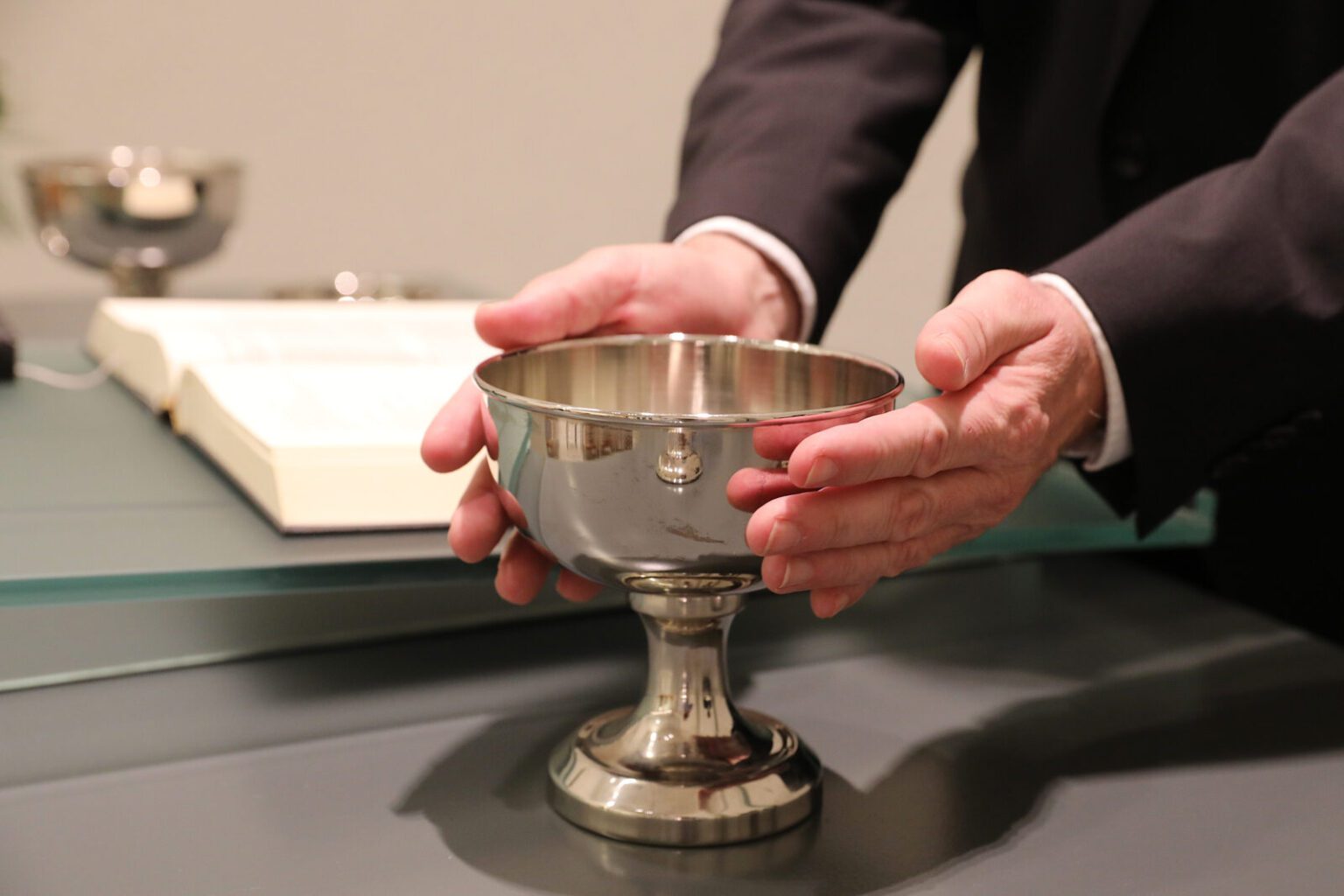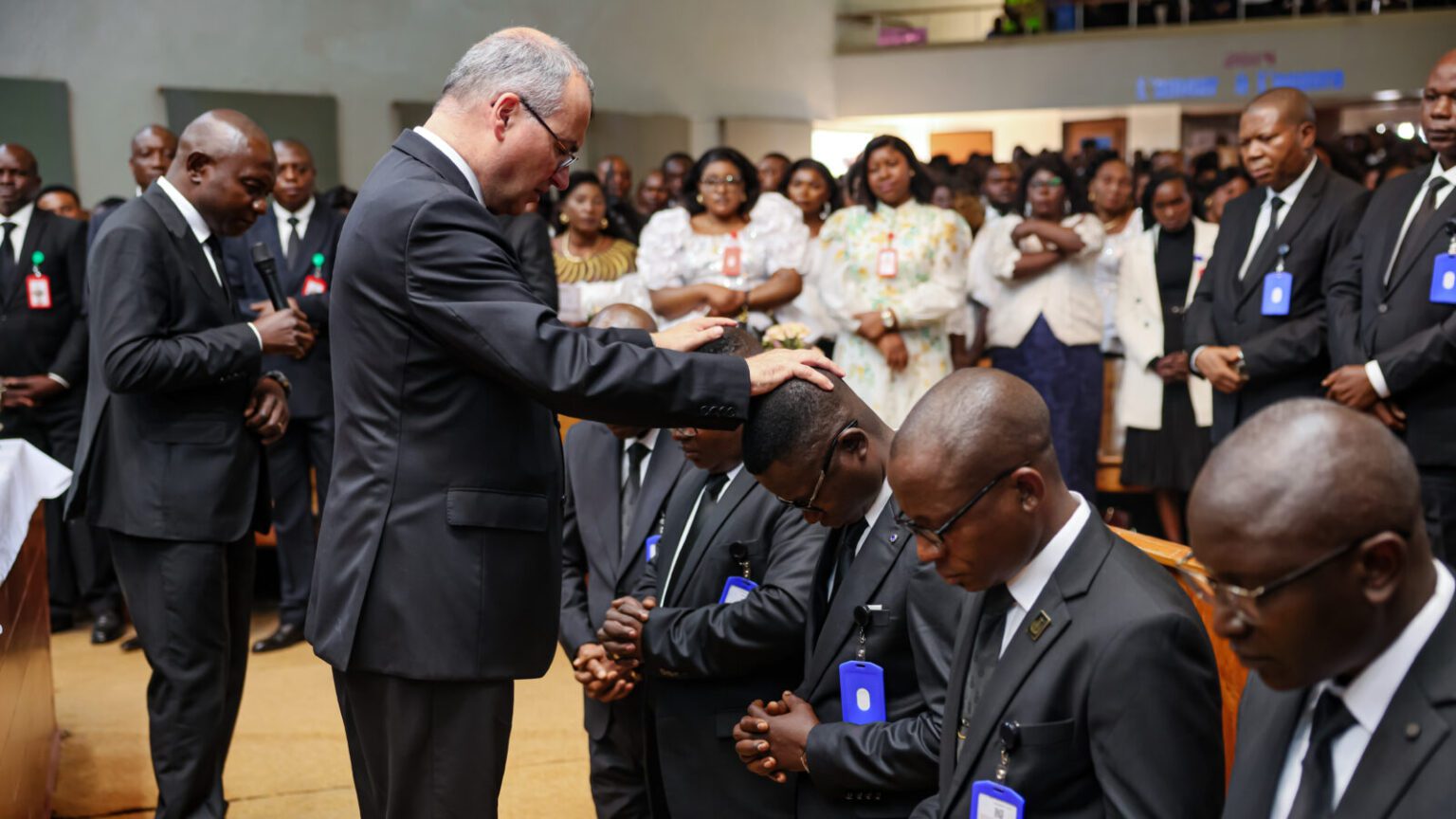

The divine and the human (or the all-too-human) are joined together in ministry. How are these entities supposed to fit together? We gain insight into this question by looking at the model behind it all, namely Jesus Christ, who not only defines ministry by way of word and deed, but also by way of His nature.
What is Jesus Christ? God or man? The answer is both. In any event, that has been Christendom’s answer to the question since the year AD 451. Jesus Christ is true God and true Man. This statement was enshrined into doctrine at the Council of Chalcedon.
Jesus Christ has two natures, a divine nature and a human nature—an invisible (concealed) nature and a visible (revealed) nature. His divine nature is of the same substance as God, the Father. And His human nature is of the same substance as man—with one important distinction: Jesus Christ is without sin.
Three pillars on a single foundation
The doctrine of Hypostatic Union—or of the dual nature of Jesus Christ—is the foundation on which the three main pillars in the doctrinal construct of the New Apostolic Church rest. It is the key to the New Apostolic understanding of church, sacrament, and ministry.
The invisible side of the church of Christ is perfect. The visible side—consisting of the fellowship of all duly baptised human beings—is flawed, by contrast. It is deficient in both unity and holiness. And all the things that human beings do, in their sinfulness, can also be found there. However, this does nothing to impair the invisible side of the church of Christ—which consists of the (still) concealed fellowship of all true believers.
The sacraments likewise have a revealed and a concealed side in that they each have a visible sign and invisible content. The two are united in the words of consecration. This is most clearly demonstrated in Holy Communion: the visible signs are the bread and wine in the form of a wafer. Through the words of consecration, the invisible substance of Christ’s body and blood are joined to the earthly elements, and a new entity comes into being. Jesus is truly present.
The relationship between ministry and person
The doctrine of the dual nature of Jesus Christ has already been explained in its relevance for the church and the sacraments in our Catechism, which was published in 2012. For ministry, however, this same key to understanding has now also been applied to the concept of ministry, which came into effect on Pentecost 2019.
Here the dual nature of Christ and His church are reflected in the relationship between the ministry and the person. The ministry corresponds to the divine nature—and is part of the invisible church. The person corresponds to the human side, and causes the ministry to be revealed in the minister.
Person and ministry enter into a bond—just like man with God in Jesus, or like the bread and wine with the body and blood in Holy Communion. Yet this entity is fallible because the nature of the person who works in this ministry is subject to sinfulness—just like the visible side of the Church.
A single entity—for a time
The act of ordination is that moment when the ministry—which is holy—is united with the person—who is sinful. Yet this entity can be dissolved again. The New Apostolic Church does not conceive of the ordination as an indelible mark on the person, nor as a sacrament whose effect of which would be irreversible.
The ministry is not a personal possession either, but is rather always inseparably linked to the Church: it is also always oriented to the local, regional, or global Church, which is its defining domain. The bearer of a ministry cannot tear himself free of this context in order to make use of his ministry arbitrarily.
Like sacrament, ministry is the manifestation of the heavenly Christ. As soon as the Lord is present in person, there will be no further need of ordained ministers.
Ministry is founded upon the word and deed of Jesus Christ. Its nature corresponds to the dual nature of the Lord. Even the powers of the ministry are completely dependent on this Sender. That will be the subject of the next issue.
(Sources for this article series include the Catechism of the New Apostolic Church, a supplementary “Commentary on Chapter 7”, Divine Service Guide Special Editions 03/2017, 04/2017, and 02/2019, as well as the training documentation for the launch events / photo: stock.adobe.com)











